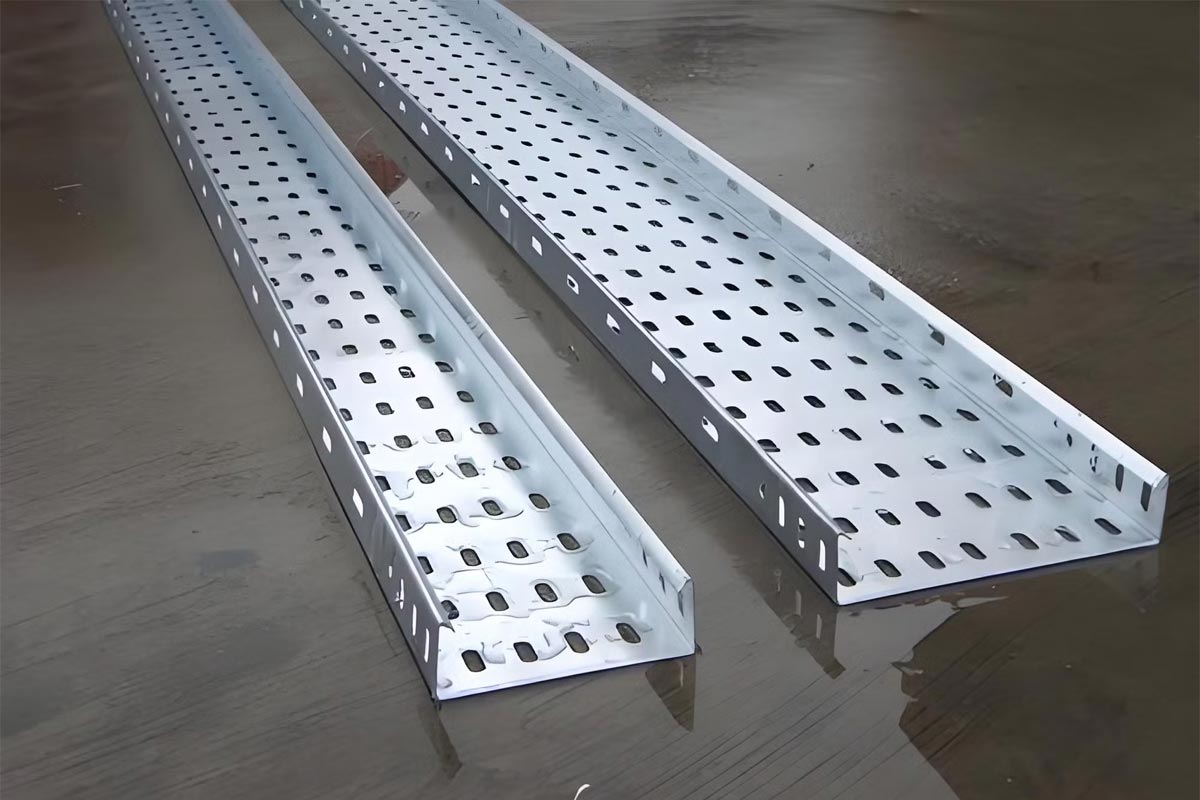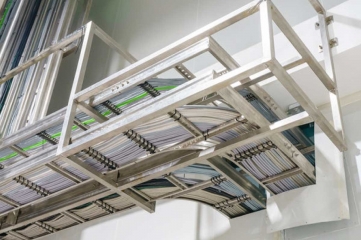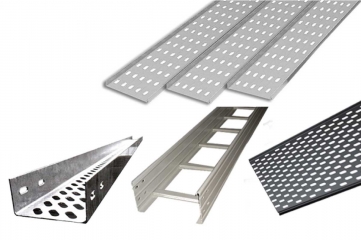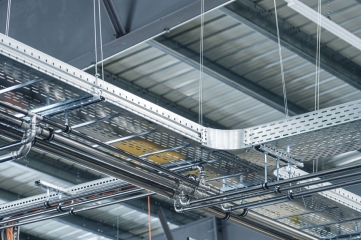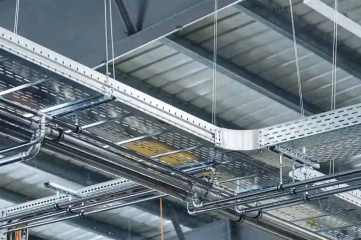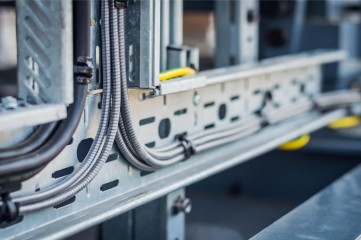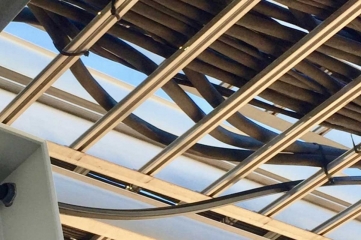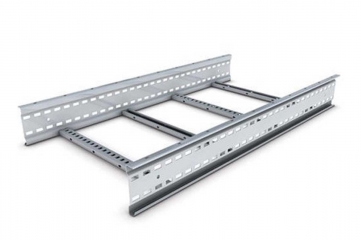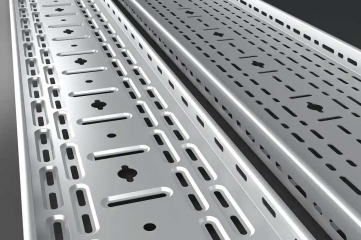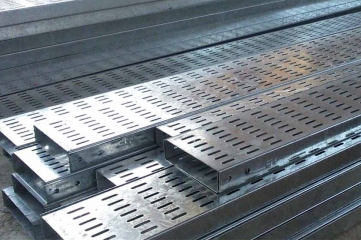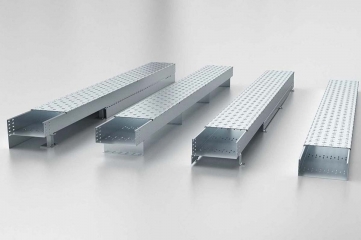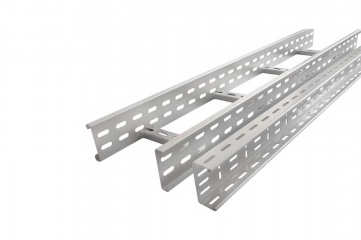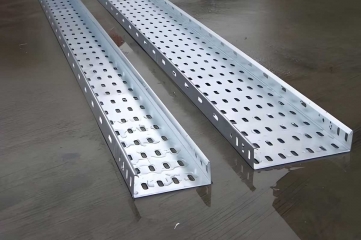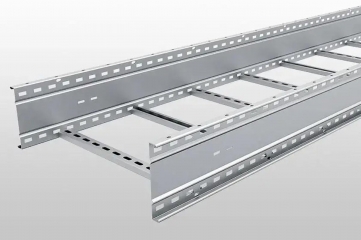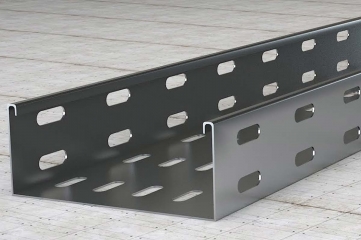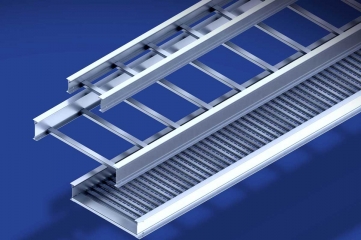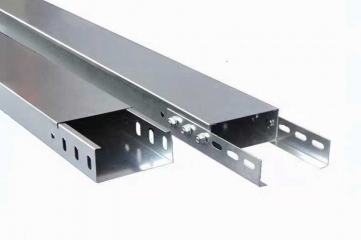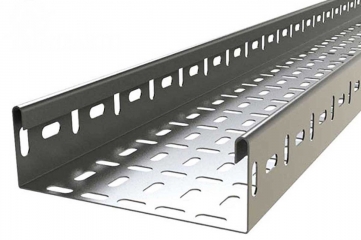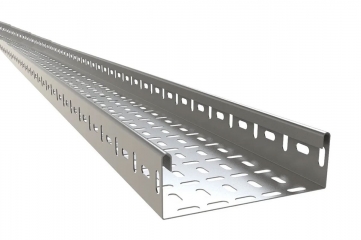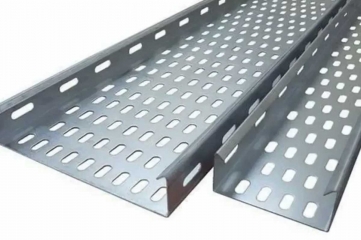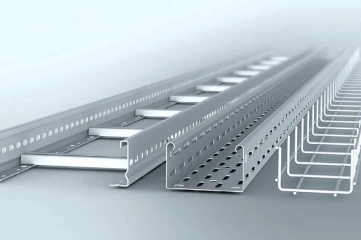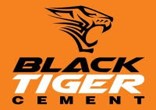Whether you're installing an industrial plant, a commercial building, or even a residential installation, the correct cable tray system can be the difference in safety, efficiency, and maintenance. Two of the most popular used options are trays for ladder cables and perforated cables. Though they both do the same thing—support and organize cables—they do it in quite different manners. Let's go through what makes these two different and assist you in determining which one is best for your purposes.
What Are Ladder Cable Trays?
Ladder Cable Trays are constructed like—you guessed it—a ladder. They are made up of two side rails with rungs in between. This open, ventilated structure is ideal for large groups of heavy cables requiring good airflow. Because there are no solid bottoms, heat can easily vent, preventing overheating. These trays are widely utilized in power generation industries, manufacturing industries, and data centers where high-performance cable management is unavoidable. One major advantage is that they can carry a heavy load while making everything easily accessible for inspection or modifications.
Related blog: The Ultimate Guide to Ladder Cable Trays for Safe Cable Management
What Are Perforated Cable Trays?
Perforated Cable Trays from Super Cable Tray Pvt. Ltd., on the other hand, have a solid bottom with small, evenly spaced holes. These perforations provide some airflow and make it simple to secure wires with cable ties or clamps. The design is slightly more compact and appears cleaner—making it an office, commercial and smaller-scale industrial favorite.
Although they are not designed to support very heavy cables, they are ideal for handling multiple lightweight ones while adding some dust and debris protection. Their enclosed appearance also makes them more appropriate where aesthetics are concerned.
Related blog: What Makes Perforated Cable Trays Ideal for Modern Infrastructure
How Ladder Cable Trays and Perforated Cable Trays Differ in Airflow and Cooling
Ladder Cable Trays are very well ventilated. The open nature means that heat can escape easily, which is important when dealing with power cables or any system where overheating might be an issue. This makes them a good choice for environments that work with high electrical loads.
Perforated Cable Trays do provide some airflow, but they do limit the airflow. For jobs that have a few cables or where the area is climate-controlled, that is probably fine. But if you have an application with heavy foot traffic, the air does not circulate very well, and you will experience issues with heat retention.
Evaluating Load-Bearing Strength: Ladder Cable Trays and Perforated Cable Tray Systems
Ladder Cable Trays are a very good type of tray for the purpose of carrying heavy loads. These trays are built for tough environments and can carry very heavy-duty cables over long distances without sagging. If you are installing large power cables, or if you anticipate an electrical install that may expand later, ladder trays have the structural strength and also the flexibility to do so.
Perforated Cable Trays are better suited to lighter cable loads. Perforated Trays are designed fine for video and communication cables or control cables and can be installed in a narrow environment or a more polished environment—but typically have limitations regarding heavy installations.
Installation and Maintenance
Installing Ladder Cable Trays are typically easy. This is the case, especially for big installations. Because they're open, it's easy to install cables, make changes, or swap out parts when necessary. Maintenance teams love the convenient access, especially in critical time situations.
With Perforated Cable Trays, cable positioning takes a bit more time. You’ll likely be using ties or fasteners to keep things neat and secure. However, once installed, these trays are low-maintenance and keep cables in place well.
Aesthetics and Placement
If your project includes exposed cabling—consider offices, shopping centers, or schools—trays for perforated cable provide a cleaner, more polished appearance. The enclosed design conceals wires better and integrates better into interior settings.
Ladder Cable Trays have a heavier industrial look. That's just fine for utility rooms or technical labs but might not be suitable for customer areas or design-focused spaces.
Which Tray To Use?
The selection between trays for perforated cable and trays for ladder cable would rest on your needs.
Choose Ladder Cable Trays when you need sturdy support, high-quality ventilation, and high accessibility for maintenance purposes. These trays are ideal for heavy installations in industrial or data center environments.
Choose Perforated Cable Trays if you require a closed, good-looks-friendly type for lighter loads of cables. They're well suited for use in commercial, office, or any setting in which appearance and some cable protection are top-of-mind priorities.
Making the Right Choice
Ultimately, the decision between Ladder Cable and Perforated Cable Trays comes down to your particular application, the size and type of cables you're dealing with, and where they will be installed. Both have their own advantages, so it's important to think about ventilation, weight load, and the overall aesthetic of the installation. If you’re dealing with a heavy-duty setup that requires constant maintenance and airflow, ladder trays are the way to go. For more refined, light-duty installations, perforated trays may offer the right balance of protection and aesthetics. Whatever your choice, both options will help keep your cables organized, safe, and well-maintained.








